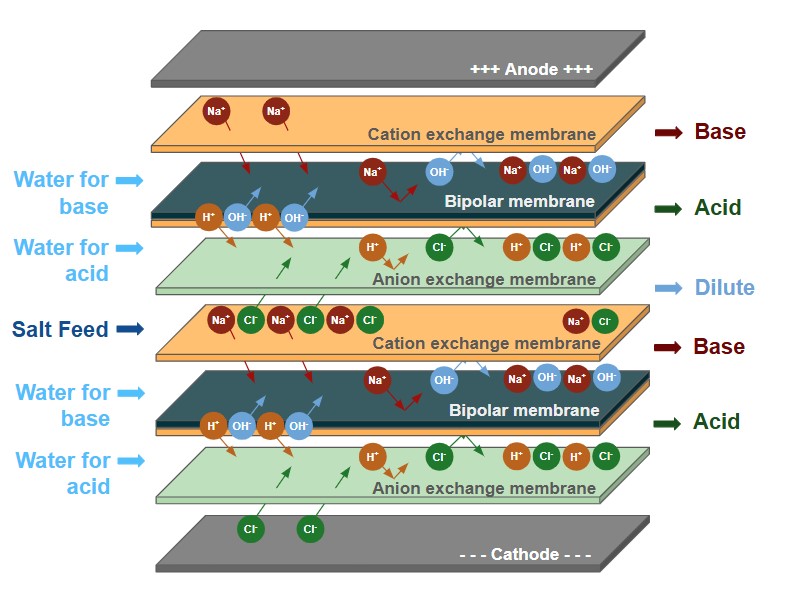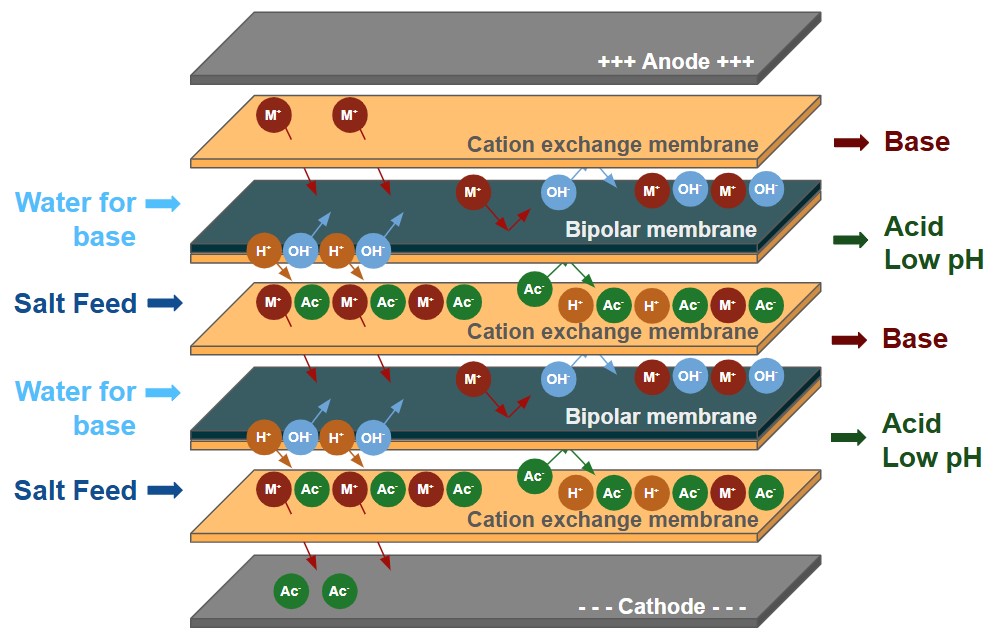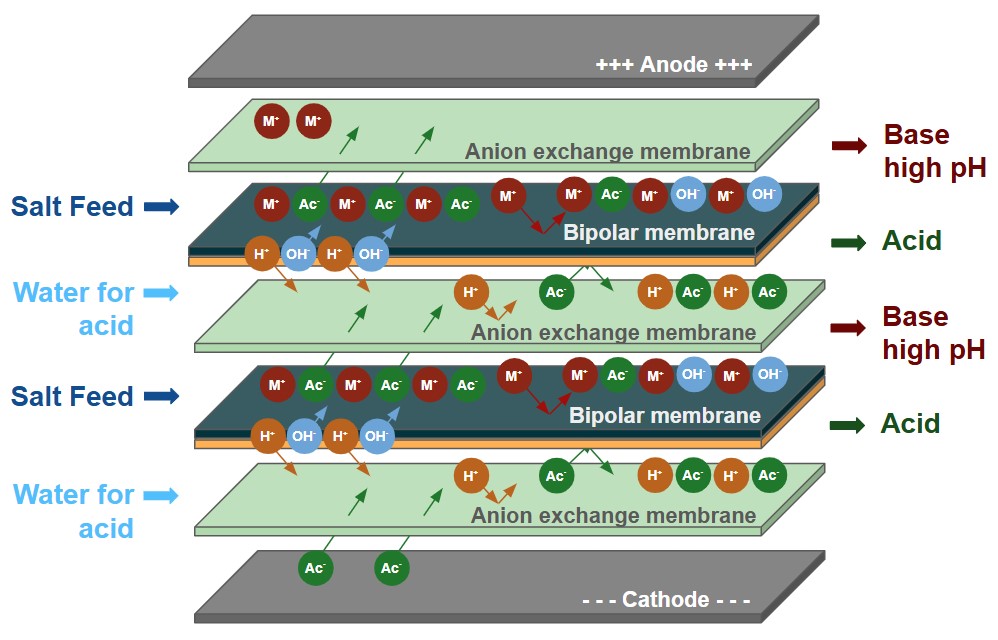Electrodiálisis bipolar (BPED)
Para la recuperación de flujos de salmuera para producir productos ácidos y cáusticos.
La electrodiálisis bipolar utiliza los conceptos básicos de la electrodiálisis, pero le incorpora una membrana bipolar que divide el agua en H+ y OH- dentro de una pila de electrodiálisis. This allows the removed salts to be converted in their acid and/or base products.
La electrodiálisis bipolar de Veolia se puede utilizar en diversas aplicaciones, como la producción de ácidos orgánicos, el ajuste de pH de bebidas o el uso de salmuera industrial para generar subproductos ácidos y cáusticos de valor agregado.



